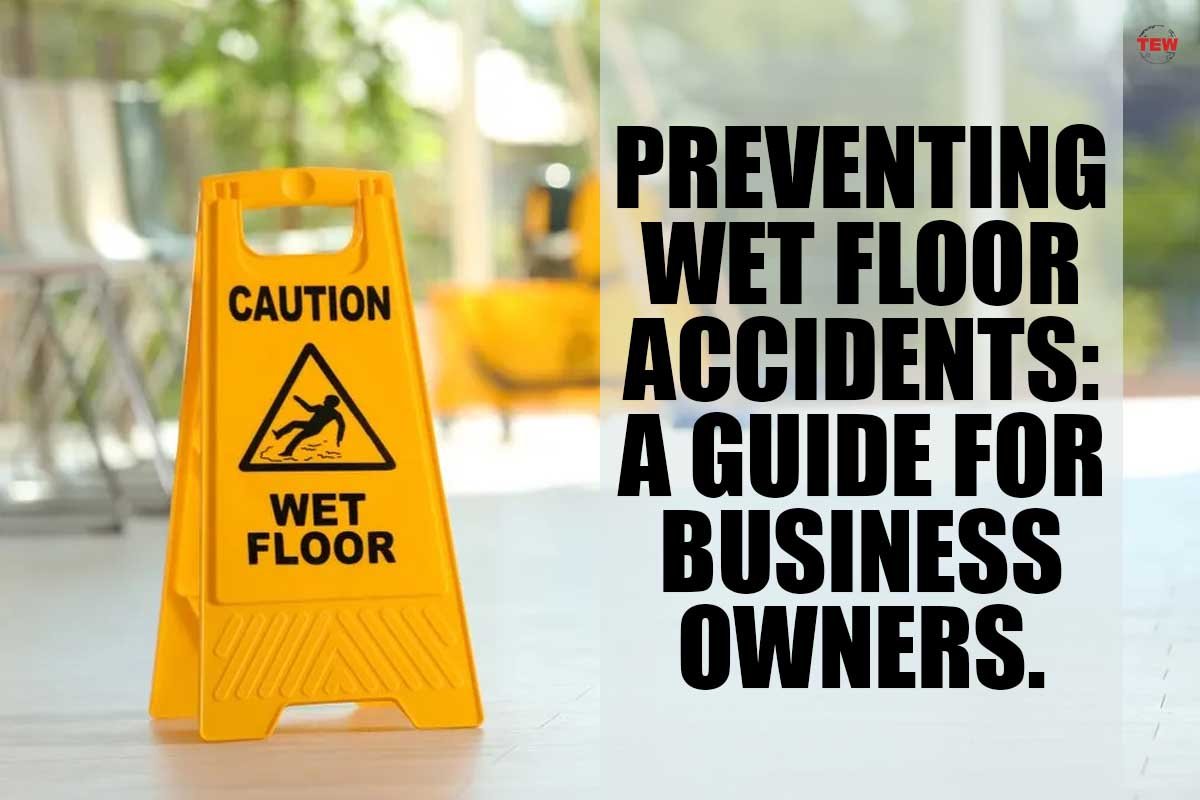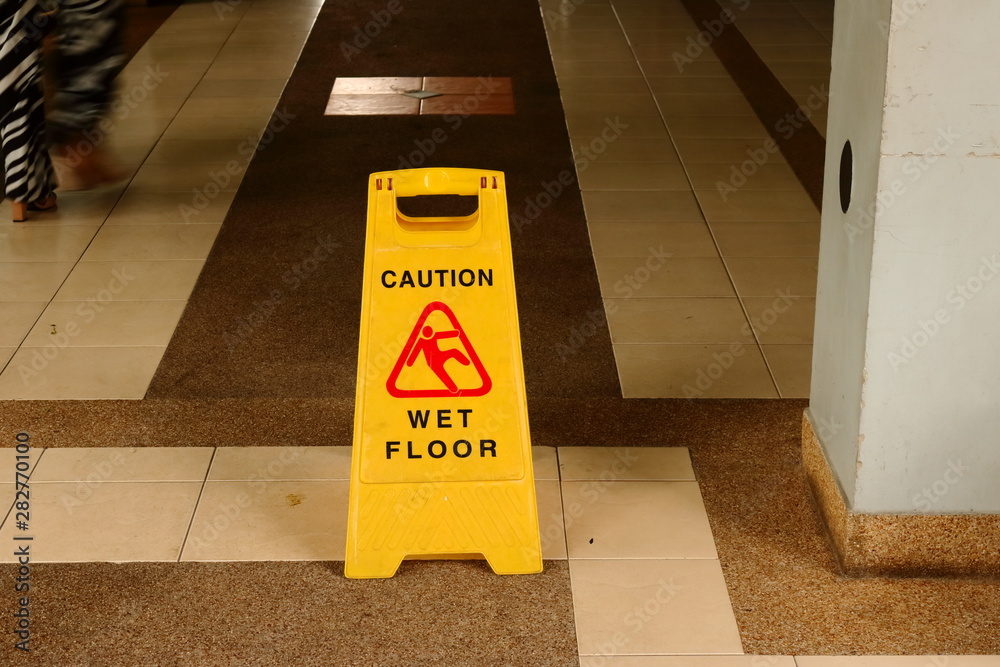Imagine this: You’re rushing to a meeting, rain is pouring down outside, and as you enter the building, your foot slips on a slick wet floor. You go sprawling, feeling a surge of pain and embarrassment. This type of slip and fall happens all too often, and while it might seem like just an everyday mishap, it can lead to serious injuries. We’ve all experienced the treacherous feeling of walking on a wet floor, but knowing the safest way to navigate these slippery surfaces can help us avoid a painful and potentially dangerous fall.

Image: mromavolley.com
So, what exactly are the hazards lurking beneath our feet on wet floors? It’s a simple concept of friction. When water coats the surface, it significantly reduces the friction between your shoes and the floor, making it much easier to slip. Knowing how to avoid these slippery situations is essential for staying safe on wet floors, both indoors and out. This guide will equip you with the knowledge and practical tips to navigate wet surfaces confidently.
Understanding the Physics of Slips and Falls
The physics behind a slip-and-fall is surprisingly straightforward. Our ability to walk relies on friction. Friction is the force that opposes motion between two surfaces in contact. On a dry surface, there is ample friction between our shoes and the floor, allowing us to move forward with stability and control. The problem arises when the surface becomes wet. Water has a much lower coefficient of friction than a dry surface. Think about trying to walk on ice – that’s why ice skating is possible. When water gets between your shoe and the floor, it significantly reduces the friction, making your foot slide instead of gripping the surface.
Identifying Wet Floor Hazards
Recognizing the potential hazards of wet floors is crucial for preventing slips and falls. We often encounter these situations in various settings:
- Inside: Wet floors indoors are common in areas like:
- Bathrooms and showers
- Kitchens and laundry rooms
- Entryways during rainy days
- Swimming pool areas
- Places where spills occur
- Outside: Wet floors outdoors pose a risk in:
- After rain, especially on sidewalks, driveways, and parking lots
- Near water sources like fountains or ponds
- Around construction zones
Wet surfaces can also be deceptively smooth. Polished floors, tile, and even wood floors can become very slippery when wet. The presence of soap or detergents in water further reduces the friction coefficient, making the floor even more hazardous. So, keeping an eye out for these slippery conditions is the first step to staying safe.
Tips and Techniques for Safe Walking on Wet Floors
Now that you understand the dangers of wet floors, let’s equip ourselves with the knowledge and techniques to navigate these surfaces safely:
1. Slow Down and Stay Mindful: One of the key principles to navigating wet floors is to slow down and pay attention to your surroundings. By taking your time, you have more control over your foot placement and reaction time if you do encounter a slippery spot. Avoid rushing or distractions while on wet surfaces.
2. Maintain a Wide Stance: A wider stance provides greater stability. When walking on wet floors, widen your stance slightly, keeping your feet shoulder-width apart. This distributes your weight more evenly and increases your balance.
3. Lift Your Feet: Avoid dragging your feet across the floor, as this increases the chances of slipping. Instead, lift your feet slightly higher than you normally would, ensuring each foot placement is deliberate and controlled. A slight “heel-toe” walking motion can help with this.
4. Pay Attention to Your Footwear: Your footwear plays a crucial role in maintaining balance on wet floors. Avoid shoes with smooth soles or thin heels, as they provide minimal friction. Opt for shoes with textured soles (like rubber or leather) to provide better grip. Remember, even shoes that are normally considered safe on dry surfaces can become dangerous when wet. The “grip” of a shoe can be compromised when the tread becomes wet, so be extra cautious.
5. Use Handrails: Utilize handrails whenever available. If you’re walking on a wet floor with a handrail, use it for support. Handrails offer an additional point of stability, especially when navigating stairs or ramps.
6. Be Aware of The “Wet Floor” Sign: Never disregard a” wet floor” sign. These signs serve as a warning for a reason. If a floor is marked as wet, it’s important to proceed with extreme caution, following all the safety tips we discussed.
7. Watch Out For Wet Spots: Even if the floor is not marked as wet, it’s important to be observant. Avoid walking directly in the middle of the floor, as there could be concealed wet spots. Instead, walk along the edges or in areas that appear drier.
8. Take Extra Care When Carrying Objects: Carrying heavy objects while walking on a wet floor increases the chances of slipping. If possible, carry lighter objects or use a cart to transport heavier ones. This keeps your hands free to regain balance if you encounter a slippery spot.
9. Be Vigilant During Inclement Weather: During rainy weather, be especially careful when entering or exiting buildings, as well as when navigating outdoor areas. It’s recommended to take your time, avoid rushing, and pay extra attention to wet surfaces.
10. Utilize Anti-Slip Mats: When appropriate, utilize anti-slip mats or rugs. These provide an extra layer of friction and can significantly reduce slip-and-fall incidents. Consider using mats in areas prone to spills or where water is frequently present, like entryways, bathrooms, kitchens, or around water sources.

Image: mromavolley.com
Expert Insights and Real-World Solutions
For professional insights on safe walking on wet floors, let’s turn to industry experts. Michael Brown, a certified safety professional and consultant for workplace safety, emphasizes that one of the most common mistakes is underestimating the risk of wet floors. He emphasizes that both individuals and businesses have a responsibility for minimizing these risks.
“Awareness is paramount,” says Michael. “Don’t just walk blindly on a floor marked as wet; understand why it’s wet and anticipate the potential danger. Employers must follow safety protocols, ensure proper signage is in place, and implement measures to reduce moisture and potential slips.”
Michael also emphasizes the importance of proper training. “Educating employees on the dangers of wet floors, safe walking techniques, and appropriate footwear is a crucial step toward preventing workplace accidents. The investment in training pays off in reducing costs associated with injuries and downtime.”
Safest Way To Walk On Wet Floor
Conclusion
Navigating wet floors requires a conscious effort to prioritize safety. By understanding the risks, utilizing proper techniques, and being mindful of our surroundings, we can significantly minimize the chances of experiencing a slip and fall. Remember to slow down, maintain a wide stance, use handrails, and pay attention to your footwear. By employing these tips and following the guidance of safety experts, we can move confidently and safely through wet environments. Stay safe, and enjoy the journey!






